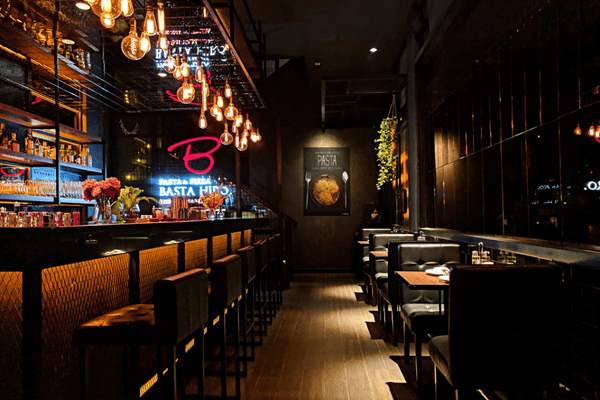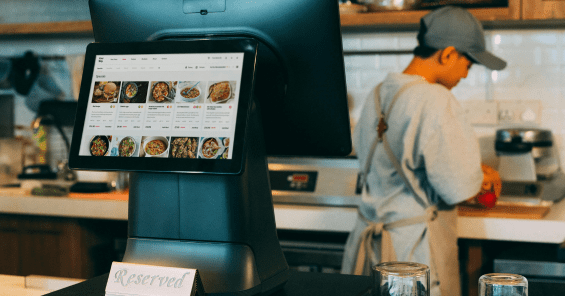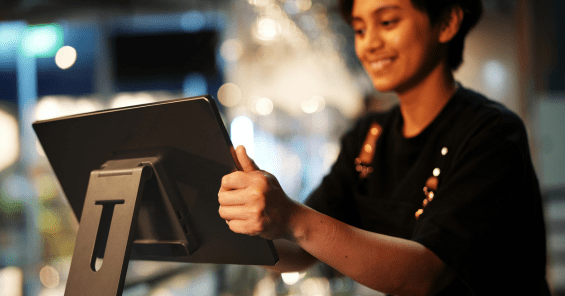

9 Ways to Control Your Liquor Costs in Your Bar and Restaurant
Having a tight handle on costs is a critical part of running any successful – and profitable – bar.
Allowing bar staff to service without a pour policy in place, losing track of what it’s in stock and what needs ordering in, or failing to keep a close eye on what suppliers are charging and you’re liable to be losing money quicker than you can keep the drinks topped up.
But if that sounds like you, don’t worry. There are some really simple and practical ways you can get better control over your beverage costs.
Six Foolproof Restaurant Cost Management Techniques
Maximize your restaurant's profitability with this essential eBook. 📈 Learn foolproof cost management techniques and unlock proven strategies for supplier negotiations and brand loyalty. 👩🍳🤝

1. Set a target pour cost
Setting the right price on your liquor might sound like an obvious one. But you’d be amazed how many bar managers fail to do the proper maths beforehand. The best way is to work out your pour cost for each liquor. That’s simply, the cost of the liquor delivered by your supplier divided by the price you sell it for. Spend $5,000 on a crate of whisky and sell it for $10,000 and you’re looking at a 50% pour cost. The most profitable drink has the lowest pour cost, and vice versa. When you know your current pour cost you can set a target for what you’d like it to be. Say you wanted to get the pour cost of that whisky down to 25%, you’d need to double what you were selling it for. Make sure you allow for spillages, broken bottles etc too.
2. Set a pour policy
No matter how carefully you work out a target pour cost, it’s virtually meaningless without a pour policy in place. Overpouring is a major cause of hidden extra cost in any bar business, particularly if bar staff are particularly generous with their top-ups or free pouring skills. It might go down well with the customers, but it isn’t going to create a sustainable business model. It might be that simply explaining this to staff and regularly checking in via training reviews to see they’re putting it into action is enough. But if that isn’t working you might want to consider both standard pour spouts, and jiggers. Most often used for cocktails, these small measuring cups are dual sided to allow for single and double pours, and make it easy for any staff to keep to accurate measures.
3. Adopt a zero-tolerance policy on staff theft
It’s sad but true: theft by staff can be a major source of shrinkage for a bar business. Incidents can span all the way from offering a friend a free drink without first asking permission to flagrantly pinching bottles from behind the bar. But whatever form it takes, it’s critical to adopt a zero tolerance policy. Communicate this regularly to staff during induction and training sessions, make it known people can come to you anonymously if they suspect any wrongdoing and – if necessary – consider visible security cameras both front and back of house.
4. Avoid waste
Waste isn’t only a problem for food items. Be it spills or incorrect orders, there are various ways that drink stock can be wasted. Yes, a certain amount is inevitable but don’t just let it slide. Ensure you keep a careful note of any sizeable spills and keep track of those mistaken drinks that end up getting poured down the drain. Are there particular culprits? Is extra training needed? Put in places measures to reduce waste where possible, and it’ll help you eke out that much more from your bottom line.
5. Get to grips with inventory management
About 80% of the costs of a bar are tied up with its liquor. That means inventory is likely your largest asset and ensuring it’s properly managed is a critical part of staying profitable. To start with that means a solid process for receiving and recording incoming inventory, with staff trained up on what to look out for, invoices carefully compared to purchase orders and stock never left unattended. Next, comes regular stock checks. A full audit of everything in your inventory should be carried out at least twice a month, and any discrepancies accounted for. All this can be done manually, of course. But to save time and ensure a much greater degree of accuracy, you might want to consider integrating inventory software management into the business.
Systems like MarketMan help you keep track of inventory from the moment it arrives to the minute it’s sold. But not only does it quickly pinpoint discrepancies it can help you clearly see the cost of goods sold (and whether this matches up to your target pour cost), highlight price rises from suppliers, flag areas of shrinkage, and provide insights on how something like cocktail ingredients might be tweaked to improve profit margin. Yes, it might require a little extra work upfront, including some staff training, but in the longer term, it can help to streamline this business-critical process.
6. Set a par level for each liquor
Par level is the minimum amount of a product a bar should have on-hand to meet demand. Go below and new stock should be ordered. An easy formula to work this out is the amount of the product used each week + safety stock (extras to reduce the risk that the item will be out of stock, and to act as a buffer in case sales are greater than expected or deliveries are delayed / the number of deliveries each week. If you have inventory management software that integrates into your POS like MarketMan then ensuring you don’t go below a product’s par level is simple.
7. Buy in bulk to take advantage of volume discounts
It sounds like another obvious one, right? But the reality is, without a proper grip on your inventory and costs first, committing to a bulk order of liquor can be quite a risky (and costly) business. Thankfully with all those other processes in place, you’ll have a clear grasp on what stock you have and what you’ll need in the coming weeks. That puts you in a great position to take advantage of volume deals offered by a supplier. There’s nearly always a discount on bulk buys so – even if it isn’t offered directly – call up and ask. What have you got to lose?
8. Target promotions at new customers
Bars are well known for their great deals. The Happy Hour offers, the signature cocktail specials, or ‘buy one, get one free’ promotions. Customers love them too. But bear in mind, while promotions increase your volume sales, they won’t provide the same boost to your value sales – or revenues. That means each deal should be thought about strategically. One of the best strategies is to target most of your promotions at new customers, rather than the loyal ones who’d probably order a drink regardless. Doing so means the temporary dent to your profit margin, is balanced out by the longer term financial gain of a new (happy) customer.
9. Mix it up
By now you’ll have a really clear view of exactly how much profit each drink nets you. Not only will you have a target pour cost for each spirit (backed up by a clear pour policy) but with the right inventory management system in place you’ll also be able to see exactly how much of each drink you’re selling and the total cost of sales (including non-alcoholic ingredients in items like cocktails). Use this insight to create a drinks menu that balances all the variety you need to keep customers happy, with a good choice of drinks that give you the greatest return.

MarketMan's restaurant management software gives you the power to automate inventory tasks, control food costs, and optimize back-of-house operations. It eliminates manual work and offers restaurateurs advanced insights for strategic decision-making. Boost your efficiency, reduce waste, and take the stress out of restaurant inventory management. Book a demo today to discover how MarketMan can transform your restaurant!
Author
Contributors
If you have any questions or need help, feel free to reach out
Don't miss out on maximizing your restaurant's profits! Calculate your ROI with MarketMan
Join over 18,000 restaurants and get the hottest restaurant tips delivered to your inbox
You may also be interested in
Ready to get started?
Talk to a restaurant expert today and learn how MarketMan can help your business






